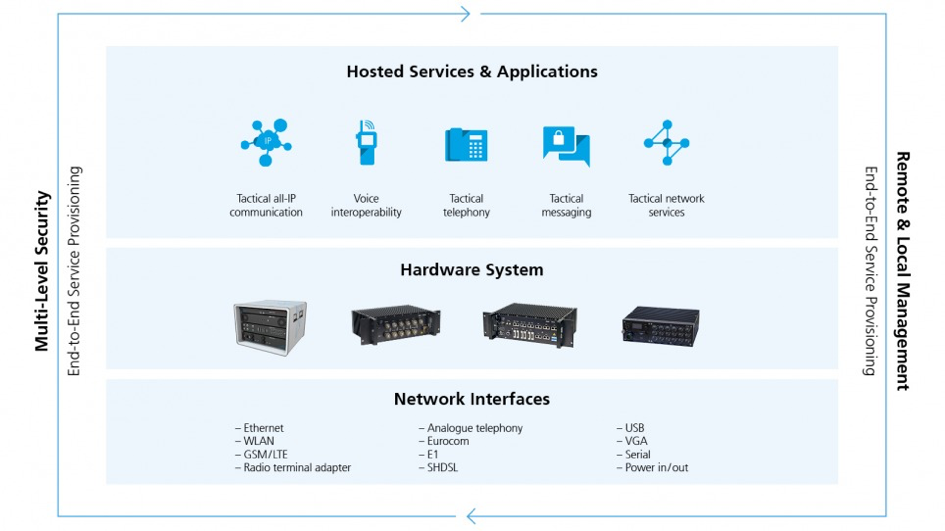Fast, interoperable and secure mobile network made in Switzerland
Is it possible to combine programmability, centralized control, robustness and adaptability in one network control protocol, in order to establish a reliable network of mobile nodes?
RUAG provides comprehensive advice and state-of-the-art products and services for security-critical environments. As a vendor-neutral full-service partner RUAG provides tailored solutions and services to Armed Forces and civilian security and rescue organizations. But RUAG has also its own products to ensure secure and reliable communication and data connections, linking a wide range of systems and devices. An overview of related services and devices is given on the picture below.
Within CONCORDIA, RUAG is participating in the Task 2.5, dealing with the security of Unoccupied Aerial Systems (UAV). There are some specific challenges that need to be addressed, such as detection, authentication, interaction, etc. In this regard, some special features of UAV need to be considered, like the movement in 3-dimensional space and within this, the different flight behaviour of fixed wing and multicopter UAVs. Speed also plays an important role, as does the quality of the connection when flying over different terrain.
Within this set of tasks, RUAG is focusing the Ad-Hoc Authentication and Networking of the UAVs, other aircrafts, and / or ground stations. Today’s mobile ad-hoc networks do not support the above mentioned complex operations. The emerging Software Defined Networking (SDN) technology has the potential to close the gap, but also has new challenges, since the centralized SDN controller does not meet the requirements needed by a wireless, mobile ad-hoc network. SDN needs a continuous exchange of topology and routing information between the controller and the interconnected nodes. A network of UAVs, however, is characterized by low data rates of wireless links and unreliable connectivity. Here, using common Mobile Ad-Hoc Network (MANET) protocols, supporting network operations in areas with low infrastructure, could be a solution. These protocols, although lacking the programmability and centralized control of SDN, are adaptive and robust to network changes. Recent research work has shown, that it is possible to combine the benefits of both paradigm, SDN and MANET, in a “flexible SDN” control protocol. RUAG, together with the academic partners within CONCORDIA, would like to continue this work of developing corresponding protocols and demonstrate the practical applicability for UAVs.
If you are interested in future mobile ad-hoc networks, follow or join the CONCORDIA Project.
(By RUAG)

